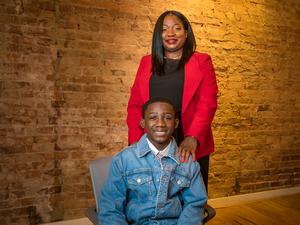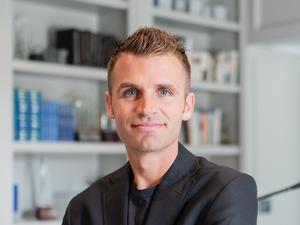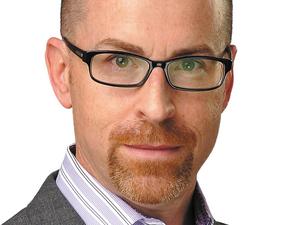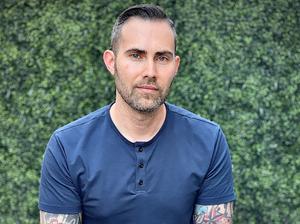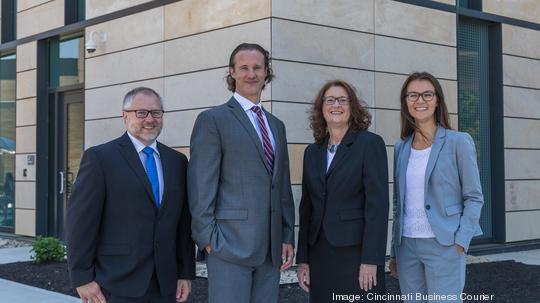
Dr. Dylan Steen is making a bold prediction when it comes to his less than 2-year-old Cincinnati-based startup. High Enroll, a new health care app, is going to be the city’s next big thing, he says.
The team behind it has experience, including last year’s addition of a former Dotloop co-founder. It’s out to solve a problem Steen can only describe as “hairy.” And in an area that’s simply ripe for innovation.
High Enroll, in short, wants to make it easier for physicians and others in the health care space to find and recruit patients for clinical trials. The mobile app replaces an outdated system that’s traditionally relied on breakroom posters and Post-It notes.
Few health care providers, the High Enroll team said, know enough about a respective clinical trial to pass that information along to a patient. And since clinical trials are essentially the basis to modern medicine – they are used to testing everything from new vaccines and diets to medical devices – if you enroll more patients in studies, you can more quickly advance the rate of health care.
“It’s one of those things. You look around the world, and you’re like, ‘How can this problem not be solved yet?’ And it’s not. And it’s wild,” said Joal Barbehenn, High Enroll’s executive adviser. “While we’re still in these early days, it’s fascinating to think just how big of an impact this company can have. There’s no question somebody is going to do this, but this team is way out ahead of it.”
‘There has to be a better way’
High Enroll launched in 2019, and, this far, has largely been self-funded by its three co-founders: Steen, Ginger Conway and Dr. Sarma Singam.
Steen, a cardiovascular physician at UC Health and a former cardiology researcher at TIMI Study Group, a Harvard Medical School affiliate, has observed this problem throughout this career. As has Conway, a former nurse practitioner who worked in the heart transplant program at UC and as a research investigator.
Health care systems recruit almost all the patients enrolled in clinical research. But those systems don’t have a way to easily engage with providers, so they can speak to their patients about potential studies. High Enroll said about 40% of any clinical trial budget is spent on recruitment, and an estimated 37% of research studies fail to meet enrollment goals.
“When I first started my career back in the late 1990s, we informed people about (research) studies by putting posters on the walls and having in-services. When I left UC about a year and a half ago, we were still informing people about studies by putting posters on the walls and having in-services,” Conway said. “We thought there has to be a better way to get the information out, to get it in the hands of the people who are actually seeing patients every single day.”
In its short life-span, High Enroll has experienced fast growth. Hundreds of users are on the platform, and the company has since signed four health systems, including UC Health, TriHealth and St. Elizabeth Healthcare locally, as well as Baptist Health, a 12-hospital system in south Florida.
The team in April 2020 brought on former Dotloop co-founder Matt Vorst as CTO and employee No. 1. Vorst said he sees a huge amount of potential with High Enroll, not unlike what he experienced at Dotloop. Dotloop, one of Greater Cincinnati’s most successful startups, sold to Zillow Group for $108 million in 2015.
Adding Vorst has served as a real inflection point for the company, Steen said. High Enroll entered the market months after his joined in August.
“Matt built Dotloop. That kind of experience was invaluable,” Steen said. “If you look at our three founders, we are not software people. We viscerally know this problem, we viscerally understand our customers, we know how health care institutions work. But we initially struggled to get the software development piece of this correctly. Matt was the solution to our biggest pain point.”
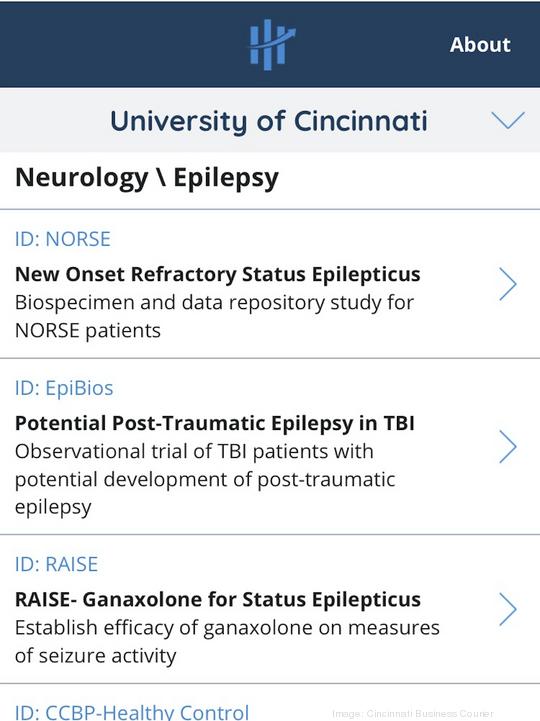
High Enroll aims to eliminate all the traditional barriers when it comes to finding and recruiting for clinical trials. In addition to the team’s real-world experience, High Enroll conducted a year of user testing and has taken a lean agile development method in piecing together its app: To that effect, the company:
- Does not require users create a login or password. Health care professionals, he said, can share studies across systems with no cap, much in the same way they share any other content, using text message or email. Providers do not have to download the app to view a study.
- Any partner health care system or research site can publish their recruiting studies on the platform; the information is curated, High Enroll said, in a way that makes it easy to read.
- Studies are searchable.
- Anyone interested in a study can use a one-touch system to communicate directly with the research team. The app allows for customizable contact times, including an after-hours option.
“Health care providers told us past technology solutions that dealt with this were just terrible and painful to use. We want this to be simple but powerful,” Steen said. “We don’t want to cause any more headaches. We know providers are burned out, and we’re coming at them with empathy.”

Steen said, overall, the problem of patient recruitment is enormous. While High Enroll has a largely regional footprint now, its solution has international implications. Finding patients for clinical trials isn’t just a U.S. problem. It’s something he experienced during his time at Harvard – even with all the publicity, notoriety and financial backing that institution’s would bring.
“You can fly anywhere in the globe, and it’s a problem,” he said. “It’s a problem here in the U.S. It’s a problem in Israel, in Argentina, India, China, everywhere you go.”
The company expects to cross 10,000 users in the next year.
“It’s going to be the next big thing out of Cincinnati. I’m serious about that,” he said. “This is a team that has resilience. We have the know-how. The key areas are there. And we’re getting wins.
“If anyone’s got a chance to crack this egg, I think we do,” Steen added. “The potential is huge.”

